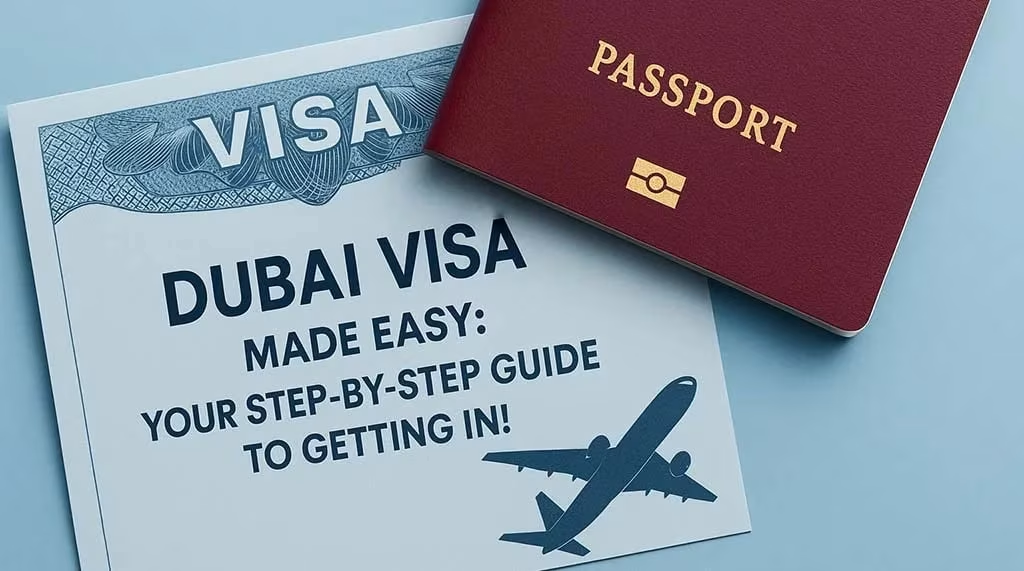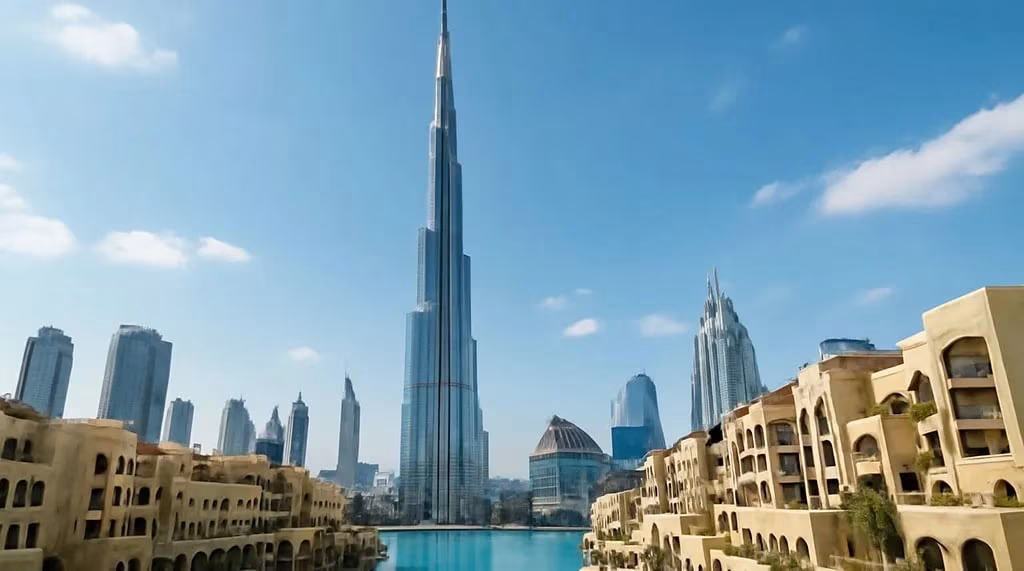There’s something magnetic about Dubai right now—and it’s not just the shimmering skyscrapers or five-star brunches. As the world gets back to traveling with more freedom, Dubai has quickly climbed to the top of many must-visit (or must-move-to) lists.
Maybe it’s the tax-free lifestyle. Maybe it’s the promise of sunshine all year. Or maybe it’s just how incredibly easy it’s become to go from dreaming about Dubai to actually booking that flight. Whether you’re planning a quick holiday or scoping it out as your future home base, one thing’s clear: people from all over—India, Pakistan, the Philippines, Europe—are making their way here in 2025.
First the visa, then looking for a cozy room in the city
Before you start mapping out your desert safari or searching for a cozy room in the city—or typing “room near me in Dubai” into your browser—let’s handle the first thing that matters: your visa.
Don’t worry—this isn’t going to be one of those confusing, paperwork-heavy nightmares. By the time you finish reading, you’ll know exactly what kind of Dubai visa you need, how to apply for it, and how to avoid the common traps that trip people up. Let’s make this simple.
Understanding Dubai Visa Types and Eligibility Requirements
Honestly, figuring out the right visa for Dubai depends a lot on why you’re going and how long you plan to stay. There isn’t a single type that fits everyone. If you’re just popping over for a week or two—maybe for a beach holiday or to catch up with friends—the 30-day tourist visa usually does the job. Want to stay longer? You can opt for a 90-day version instead. These are both available as single or multiple-entry options, depending on how often you plan to leave and re-enter the country.
If it’s just a short layover and you’ve booked through airlines like Emirates or Etihad, a 48- or 96-hour transit visa is probably all you need. Super convenient, especially if you want to spend a day exploring the city instead of sitting at the airport. For anything beyond that—like moving for work or joining family—Dubai has several residency visa tracks, each with its own rules, and we’ll break those down later. The good news? The whole system’s become more streamlined in recent years, especially for nationals from countries with strong UAE travel ties.
Some nationalities—like U.S. or GCC citizens—get lucky with visa‑on‑arrival or visa‑free access, meaning you can just land and get stamped in for up to 30 or 90 days, depending on your passport.
Once you’re in Dubai on a tourist visa, you can switch to a residence visa—typically sponsored by an employer, family member, educational institution, or property investment. These usually last one to three years, with longer options like the prestigious 10‑year Golden Visa for investors, scientists, entrepreneurs, and specialized talent, all demanding specific financial or academic credentials. If all this feels overwhelming, don’t worry—later on, we’ll unpack exact eligibility requirements for each type so you can pick the right route without getting lost in the paperwork.
Dubai Tourist Visa Requirements 2025
Before you start dreaming about desert safaris and skyline dinners, make sure you’ve got your paperwork in order. Here’s what most travelers will need to enter Dubai on a tourist visa in 2025:
A passport that’s valid for at least six months after your arrival date. Sounds basic, but a surprising number of travelers get turned back for not checking this. And handwritten or temporary passports? Those won’t fly—literally.
A recent passport-size photo—in color, with a white background. You’ll also need a clear scan of your passport’s info page, preferably in PDF format.
Proof of where you’re staying and how you’re leaving. That means a hotel booking (or a friend’s address if you’re staying with someone), plus a return ticket or onward flight.
Travel insurance isn’t always mandatory, but more and more travelers are being asked to show it—especially for longer stays. And if you’re applying for a 60-day tourist visa, don’t be surprised if they ask for bank statements showing around $4,000 USD or more.
How you apply depends on where you’re from. Nationals of countries like the U.S., U.K., and much of Europe usually get visa-on-arrival. Others may need to sort out their visa ahead of time—often through an airline like Emirates or a travel agency.
Get these sorted ahead of time, and you’ll save yourself a lot of stress at the airport. From there, it’s just palm trees, gold souks, and that unbeatable city skyline.
Step-by-Step Guide to Applying for a Dubai Visa
Applying for a Dubai visa these days is smoother than you’d expect—just plan ahead and follow these steps:
Pick the right visa type
whether that’s a 30‑ or 60‑day tourist visa, a quick 48/96‑hour transit visa, or a longer‑stay permit like the 5‑year multi‑entry tourist pass. Tools like ICP.gov.ae or airline portals can help you see what suits your nationality.
Gather and prepare your paperwork
scan your passport (valid at least six months), grab a crisp passport‑style photo, snag your return ticket and hotel confirmation, and maybe pull up your bank statements if you’re going longer than a month.
Choose where to apply
folks often go with airlines (Emirates, Etihad, flydubai), travel agencies, or the official ICP/GDRFA platforms or apps like Dubai Now. Pick what feels easiest for you.
Fill out the form and pay
online forms are straightforward—enter your personal info, travel dates, upload docs, and pay the fee (typically AED 250–600 depending on visa type and processing speed).
Sit tight for approval
most visas come through in 2–7 working days, though you can pay extra for faster or express options. Keep an eye on your email for confirmation and download that e‑visa PDF to print out or show at the airport
Follow these steps and you’ll avoid late-night form-filling and airport panics—next thing you know, you’re stepping into Dubai with your visa ready to go.
Dubai Visa Process for Indians, Pakistanis, and Filipinos
Navigating Dubai’s visa rules varies quite a bit depending on where you’re from, but here’s the essence for travelers from India, Pakistan, and the Philippines.
If you’re moving to Dubai from the Philippines, or just visiting short-term, knowing the right visa process can save you time and avoid surprises.
Indians: Many Indian passport holders can now land visa-free for short stays—if you hold a valid US, UK, EU/Schengen visa or green card, that gets you a 14‑day entry on arrival (extendable once). For longer visits, most still go for a pre-arranged tourist visa via airlines or agencies like Emirates or FlyDubai.
Pakistanis: If you’re Pakistani, it’s a bit more layered—you’ll usually need an invitation or sponsorship from someone in the UAE, an AED 4,000 refundable deposit plus proof of accommodation and return-ticket. Processing times are around 3‑4 business days after submission.
Filipinos: The Philippines-UAE visa corridor is fairly smooth—Filipino nationals can apply online for a 30- or 60-day eVisa; if they’re already holding a US/UK/EU/Schengen visa, visa-on-arrival is often available too.
The steps are straightforward: choose the right visa based on your nationality and travel history, submit all required docs (passport, photos, ticket, hotel), pay the fees, then wait a few days before you get your e-visa. That’s it—the key is in the details, and most people sail through without a hitch.
Common Dubai Visa Mistakes to Avoid (and How to Fix Them)
Even small mistakes can stop your Dubai visa process. These types of mistakes will usually increase your stress. Below, we will introduce you to common mistakes that travelers often make and how to avoid them.
Submitting duplicate applications. If you apply twice for the same traveler—say, through different platforms—you’ll likely cancel out both submissions and lose fees.
Missing parent info or consent on minor’s visa. For kids under 18, omitting both parents’ full names or signed consent is a common reason for rejection.
Poor photo or passport copy quality. Blurry scans or black-and-white passport copies get rejected—always use high-res color images of your passport bio page and photo.
Applying too soon after your last stay. Arriving right after a 30-day tourist visa often leaves a short “cool-down” window—waiting at least 30 days helps you dodge automatic blocks .
Financial documents and itinerary deficiencies. Failure to provide a return ticket and confirmed accommodation or sufficient funds (e.g. AED 2,500-3,000) are considered itinerary deficiencies.
Typos in your application. Small mistakes like the wrong name or passport number will lead to the rejection of your application. So make sure to check all the fields carefully before submitting.
These may seem simple or unimportant, but they are what trip many applicants up. So avoid future surprises by paying a little attention – this way you will have a smooth trip to Dubai.
Visa Fees, Processing Times, and Payment Options
| Where to Apply | Processing Time | Fee (AED) | Visa Type / Option |
| Online / Airline / Travel Agency | 3–5 working days | 250–300 | 30-Day Tourist Visa (Single Entry) |
| Online / Airline / Travel Agency | 3–5 working days | 690–900 | 30-Day Tourist Visa (Multi Entry) |
| Online / Airline / Travel Agency | 3–5 working days (faster if express) | 600–1,740 | 60–90 Day Tourist Visa |
| Airline | 2–4 days | Free | 48-Hour Transit Visa |
| Airline / Travel Agency | 2–4 days | 50–55 | 96-Hour Transit Visa |
| ICP / Airline / Agency | Under 48 hours (varies by provider) | +100–400 (extra charge) | Expedited Processing (All Types) |
| Apply before current visa expires | — | 200–850 (per extension) | Visa Extension (Tourist Visas) |
| Pay on departure | — | 100/day + exit fees | Overstay Penalty |
Conclusion
If you’re planning to visit Dubai in 2025, getting your visa doesn’t have to be stressful. Just make sure you know what type of visa you need, gather the right documents, and apply on time. A little preparation goes a long way—and before you know it, you’ll be landing in Dubai, ready to explore the city’s skyline, markets, beaches, and everything in between.
Frequently Asked Questions
Citizens of many countries, like the U.S., UK, EU, and GCC, receive a 30–90 day visa-on-arrival stamp when they land—no pre-application needed.
Most passports earn a 30-day stay (single-entry), while Schengen, US, UK, and some others can stay up to 90 days within 180 days.
You’ll typically submit a passport scan (6-month validity), photo, round-trip ticket, and hotel reservations via airline portals or visa agencies.
Standard tourist visas usually arrive in 2–5 working days; expedited or “express” routes can cut that down by a day or two.
Not always—but it’s a smart move, especially if you’re planning to stay more than a few days. Some visa applications now ask for proof of health coverage, and having it can save you a lot of stress in case of unexpected issues.
Nope—it’s not a tourist visa. The Golden Visa is a long-term residency permit (valid for 5 or 10 years), designed for investors, skilled professionals, and people with specialized expertise or exceptional academic backgrounds.
In some cases, yes. If you're from a country that normally needs a visa, holding a valid U.S., UK, or Schengen visa might make you eligible for a visa-on-arrival in the UAE. It depends on your passport, so double-check before flying.
Yes, you can. Most tourist visas can be extended twice—each time for a fee that ranges from AED 200 to AED 850. Just make sure to apply for the extension before your visa expires.
Overstaying isn’t cheap. You’ll be fined about AED 100 for each extra day, and you might also face additional charges when leaving the country. It’s best not to risk it.
Yes—48-hour transit is free, and a 96-hour transit visa costs about AED 50, valid for travelers with layovers over 8 hours plus hotel booking.



